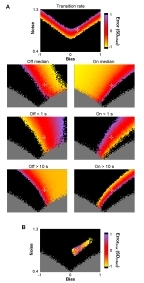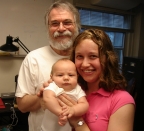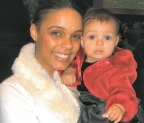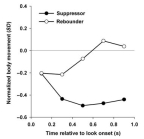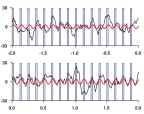
Professor Emeritus
Department of Human Development
Cornell Universitry
Ithaca, NY 14853
People
Publications
Contacts

Visual foraging is an important way for infants to learn about their world, especially in the first few months after birth before they can crawl or walk. We can accurately measure what infants look at and when they shift their gaze by tracking the reflections of objects from the surface of their eyes. The constant fluctuations in body movement can be detected by sensitive sensors in the infant's seat or carrier.
Taking hundreds of measurements each second, we have found that ongoing fluctuations in body movement are rapidly suppressed when infants attend to something. Seconds later, just before they look away, there are one or more quick bursts of body movement. Based on these and other studies it appears that spontaneous body movements may help infants to unlock their gaze and thereby promote visual foraging.
One of the more difficult challenges in studying infant visual foraging is telling the difference between looking and attending. To solve this problem, we measure the very small electrical signals produced by the brain in the regions that process visual information. We have shown that, as in adults, the strength of these signals increases during attention. We are now using this new technique to learn how infants' attention to multiple objects changes during visual foraging.
We are also collecting follow-up data from children who participated in visual foraging experiments as infants to see if normal variation in the coupling between body movement, gaze, and attention predicts anything about later development.
From a more theoretical perspective, we have been building mathematical models of infant visual foraging as a way to understand the dynamic relations between body movement, gaze, and attention. This work has been done in collaboration with John Guckenheimer in the Center for Applied Mathematics at Cornell.
In addition to the work on infant visual foraging, the lab also supports research on a range of psychobiological and neurobehavioral topics. For example, work by Sarah Watamura, now at the University of Denver, examined the possible link between stress sensitivity and immune function in preschoolers.
